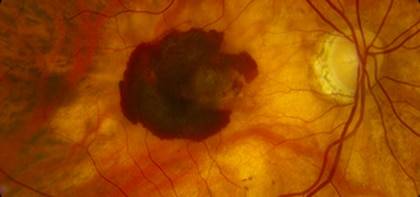Retinal Disorders: Causes, Symptoms, and Treatment Options
The human eye is a complex organ that enables us to perceive the world around us, but like any part of the body, it is susceptible to disorders and diseases. Among the most critical components of the eye is the retina, a thin layer of tissue located at the back of the eye. The retina plays a crucial role in vision by capturing light and converting it into neural signals that are sent to the brain via the optic nerve. When the retina is affected by a disorder or disease, it can lead to vision impairment or even blindness. In this article, we will explore various retinal disorders, their causes, symptoms, and available treatment options.
#### Anatomy of the Retina
Before delving into retinal disorders, it's essential to understand the basic anatomy of the retina. The retina is composed of several layers of specialized cells, including photoreceptor cells called rods and cones, which are responsible for detecting light and color, respectively. These cells are supported by layers of interneurons and are nourished by a network of blood vessels. At the center of the retina lies the macula, a small area responsible for central vision and high visual acuity.
#### Common Retinal Disorders
1. **Age-Related Macular Degeneration (AMD):** AMD is one of the leading causes of vision loss in older adults. It affects the macula and typically progresses slowly over time. There are two types of AMD: dry AMD, characterized by the accumulation of drusen (yellow deposits) beneath the retina, and wet AMD, which involves the growth of abnormal blood vessels under the macula.
2. **Diabetic Retinopathy:** This condition is a complication of diabetes and occurs when high blood sugar levels damage the blood vessels in the retina. Diabetic retinopathy can cause vision loss or blindness if left untreated and is a leading cause of blindness among working-age adults.
3. **Retinal Detachment:** Retinal detachment occurs when the retina peels away from the underlying layers of the eye. It can occur suddenly and requires immediate medical attention to prevent permanent vision loss. Risk factors for retinal detachment include aging, previous eye surgery, and severe nearsightedness.
4. **Retinitis Pigmentosa (RP):** RP is a group of inherited disorders characterized by the progressive degeneration of the retina's photoreceptor cells. It typically begins with night blindness and tunnel vision and can progress to complete blindness in some cases. RP affects approximately 1 in 4,000 people worldwide.
5. **Macular Hole:** A macular hole is a small break in the macula, resulting in blurred or distorted central vision. It is often associated with aging and can be caused by the traction of the vitreous gel on the retina.
6. **Retinoblastoma:** Retinoblastoma is a rare form of cancer that develops in the retina, usually affecting young children. It can lead to vision loss or loss of the eye if not diagnosed and treated promptly.
#### Causes and Risk Factors
The causes of retinal disorders vary depending on the specific condition but may include genetic factors, age-related changes, systemic diseases such as diabetes, trauma to the eye, and environmental factors. Certain lifestyle choices, such as smoking and excessive alcohol consumption, can also increase the risk of developing retinal disorders.
#### Symptoms
Symptoms of retinal disorders can vary widely depending on the specific condition but may include:
- Blurred or distorted vision
- Loss of central or peripheral vision
- Floaters (small dark spots or cobwebs that appear to float in the field of vision)
- Flashes of light
- Difficulty seeing in low light conditions
- Blind spots in the field of vision
It's essential to seek medical attention if you experience any sudden changes in your vision or if you notice any of these symptoms, as prompt diagnosis and treatment can help prevent further vision loss.
#### Diagnosis
Diagnosing retinal disorders typically involves a comprehensive eye examination, including a visual acuity test, dilated eye exam, and imaging tests such as optical coherence tomography (OCT) or fluorescein angiography. In some cases, genetic testing may be recommended to identify inherited retinal disorders.
#### Treatment Options
The treatment of retinal disorders depends on the specific condition, its severity, and the individual patient's needs. Some common treatment options include:
1. **Medications:** In the case of wet AMD or diabetic retinopathy, medications such as anti-VEGF drugs may be injected into the eye to help reduce abnormal blood vessel growth and preserve vision.
2. **Laser Therapy:** Laser therapy may be used to seal leaking blood vessels in conditions such as diabetic retinopathy or to create small burns to promote the reattachment of the retina in cases of retinal tears or holes.
3. **Surgery:** In more severe cases of retinal detachment or macular hole, surgical intervention may be necessary to reattach the retina or repair the hole. This may involve techniques such as vitrectomy, scleral buckling, or pneumatic retinopexy.
4. **Implantable Devices:** In recent years, implantable devices such as retinal prostheses or gene therapy have shown promise in treating certain retinal disorders, particularly those involving photoreceptor cell degeneration.
5. **Lifestyle Modifications:** Making healthy lifestyle choices, such as maintaining a balanced diet, exercising regularly, and avoiding smoking, can help reduce the risk of developing retinal disorders and may slow the progression of certain conditions.
#### Conclusion
Retinal disorders encompass a wide range of conditions that can have a significant impact on vision and quality of life. While some retinal disorders are genetic or age-related and cannot be prevented, early detection and treatment can help slow disease progression and preserve vision. It's essential to undergo regular eye examinations, especially as you age or if you have a family history of eye disease, to detect retinal disorders in their early stages when treatment is most effective. By raising awareness of retinal disorders and promoting research into new treatments and therapies, we can continue to improve outcomes for patients affected by these conditions.



No comments yet
Be the first to share your thoughts!